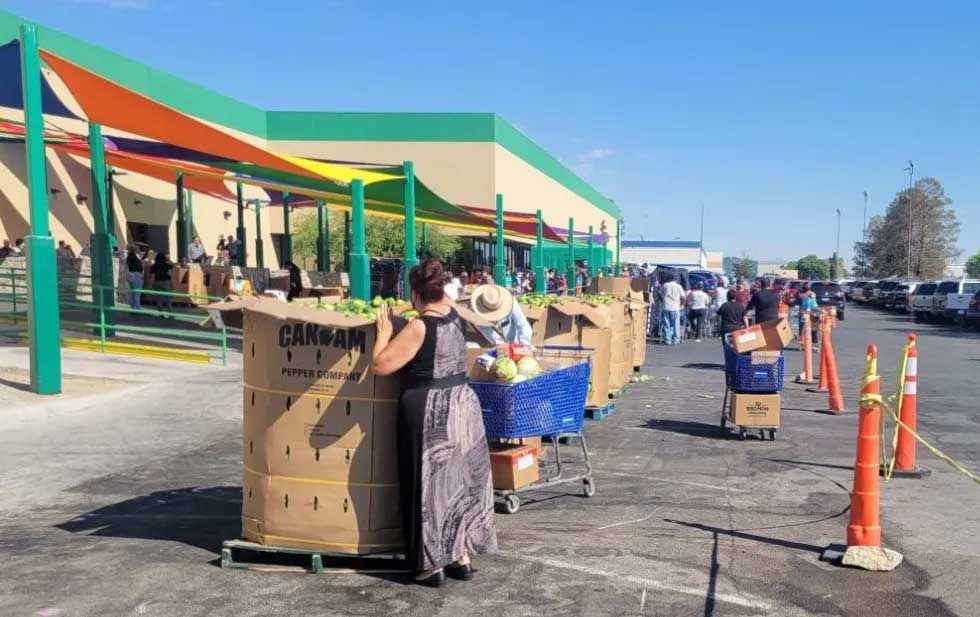Step.- When it comes to hunger, 35% of El Pasoans and 61% of UTEP students experienced food insecurity last year, according to a new study by the University of Texas at El Paso (UTEP) and the El Paso Food Band.
“Having worked with food insecurity and food banks in Detroit for over two decades, I have to say I’m really surprised by the findings of this study,” said Susan Goodell, executive director of El Pasoans Fighting Hunger. . “On top of that, I’d say it’s twice the national estimates for this community. I think it’s shocking not just to me, but to every member of this community and the implications of the society we live in.”
The UTEP survey, which began in November, is based on responses from 657 El Paso County residents and more than 1,000 UTEP students. The results were announced on Wednesday. “I hope this gets the attention of our elected officials and community leaders,” Goodell said. “When you have a community where one in three people are food insecure, that has huge implications for our community.”
Gregory Schober, assistant professor of rehabilitation sciences at UTEP, said the new survey is necessary because there is no prior data that adequately represents El Paso. Previous research on food insecurity based on state measures such as poverty rates and food aid, which were then applied locally, put El Paso’s food insecurity at 15.1%. “(Thirty-five percent) is more than double the level of the most recent round of estimates for 2021,” he said. “Food insecurity is a significant and growing challenge in our society. But we have recognized the scope of the challenge and taken important steps to address it.”
As part of the research, an email survey was sent to UTEP students. As a result, 1,685 of the 23,880 enrolled students returned the survey.
Eva Moya, an associate professor in the UTEP Department of Social Work, began looking at food insecurity among the student population in 2019. In the first year of the study, 40% of students reported being food insecure. In 2020 and 2021, when there were pandemic-related lockdowns, the percentage dropped slightly, Moya said.
“Students were mostly at home during COVID so they had a little more access to food,” he said. “Now what we saw in 2022 is telling, because the peak is back to 61%. That’s huge. It’s double the data collected from the city of El Paso (…) that says our students are struggling. Mostly it’s related to income. It’s related to employment and Food is expensive these days.
Moya said she’s talked to students who are struggling to get help even when they’re going through tough financial times.
“That element of perception is preventing our students from accessing and receiving services,” she said. “So I tell (them) it’s okay, you know, we all get into trouble sometimes. We could all use a helping hand, so why not stop by the food pantry, see what’s available, and let someone else know about the resources available so we can start breaking down the stigma?”
Goodell said his organization is focused on combating stigma. “We work with our volunteers and team members to be welcoming and friendly to the people that come in here because we know that we often encounter them on the worst days of their lives,” Goodell said. “If you can’t feed yourself, you can’t feed your children, things are pretty bad.”
Another interesting survey result, according to Moya, was that about 32% of students received emergency food from food banks, while only 59% were aware of the service. 30 percent said it was difficult to access food on campus, and 78 percent wanted more information.
“The truth is, a good number of our students don’t use the services,” he said. “It is a remarkable fact that many of our students are heads of households. So, they are struggling to make a living.
Moya said his department has begun to act on the information as more data is collected. Six months ago, a student council of undergraduate, graduate and doctoral students was formed to address the issue.
“They’re watching and critiquing and using the data to make recommendations to management,” he said. Some of the recommendations include better access and flexible hours at the university’s food pantry, removing the stigma of asking for help, more produce and creating an on-campus food garden.
“So they really recommend finding innovative ways to empower students, especially international students who have to buy food,” he said.
Another challenge facing local food banks, soup kitchens, shelters, churches and agency partners in El Paso is that approximately 98% of the food used in food banks comes from other places, and El Paso produces only 2%.
“I think we have to find ways to do more,” Goodell said.
“There’s a global food shortage right now that’s affecting food banks across the country. We’re not immune to that, especially since we don’t have a natural food base.”
The second round of survey is expected to take place in 2023.

“Music ninja. Analyst. Typical coffee lover. Travel evangelist. Proud explorer.”




:quality(85)/cloudfront-us-east-1.images.arcpublishing.com/infobae/SXDWOIO7O5FMZOWUATFEXQYWTY.jpg)


More Stories
The girl, Maria Gomez Perez, was found by authorities in Ohio; A 34-year-old man has been arrested
USA I “Miraculous” rescue of man who spent 12 days without food in Kentucky mountains
Trump reportedly regrets choosing JD Vance